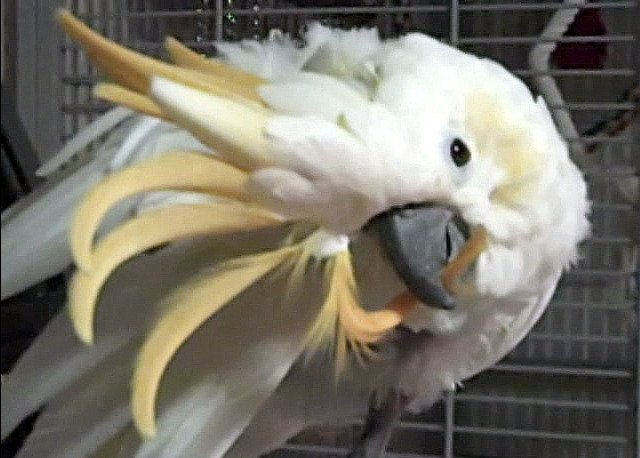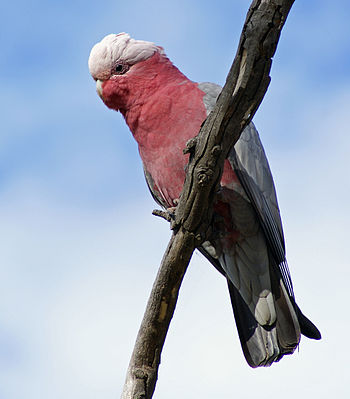 |
| Citron-crested Cockatoo. Photograph of upper body and crest. (Photo credit: Wikipedia) |
They have beautiful plumage in a rainbow of varieties, and an amazing crest on top of their head, which they can control to fan out or to lay back flat! They have big personalities and are very intelligent.
Scientific Classification:
Kingdom: Animalia
Phylum: Chordata
Class: Aves
Order: Psittaciformes
Family: Cacatuidae
Subfamilies: Microglossinae, Calyptorhynchinae, Cacatuinae
There are 21 species that belong to the Cacatuidae family. Of these 21, only 11 exist in Australia in the wild, 7 exist in Indonesia, New Guinea and other South Pacific Islands, and 3 exist in both New Guinea and Australia.
Cockatoos are under both the endangered and vulnerable species list, protected under the Convention on International Trade in Endangered Species of Wild Fauna and Flora. This means that it is illegal to import and export these birds, which are caught in the wild.
Endangered Cockatoo Species:
* Goffin's cockatoo, Cacatua goffini
* Red-vented Cockatoo, Cacatua haematuropygia
* Moluccan Cockatoo, Cacatua moluccensis
* Yellow-crested Cockatoo, Cacatua sulphurea
- includes the subspecies, Citron-crested Cockatoo, Cacatua sulphurea citrinocristata
* Palm Cockatoo, Probosciger aterrimus
If you are interested in adopting a cockatoo for a pet, make sure you are buying from a reputable dealer that has not partaken in the illegal trade of wild cockatoos.
My Story:
When I moved to Perth, Western Australia, about 13 yrs ago, the 1st day I woke up, I went for a jog. I was flabbergasted at the teeming wildlife just in my neighborhood. I made a few turns and ended up jogging through a park, where I found the most amazing site.
The trees were all pink! (Photo: This is what I saw! I wish I could find my photos to show you!) What I mean is, that they were absolutely full of pink cockatoos! Absolutely one of the most amazing things ever! Literally, there was no branch left open. What a treat to get up in the morning for your dull jog, and be graced with this beauty on a regular basis. So special!
It was so normal for the locals, they didn't really see what the big deal was, and certainly did not want to go jogging with me...LOL Coming from Canada, this was a real eye-opening experience.
How beautiful, I thought. How terrible that they are all either endangered or vulnerable now, 13 yrs later.
* Tip: If you have any respiratory diseases, problems or sensitivities, a bird for a pet is not a great idea, as it can irritate and aggravate your respiratory problems further. (When we owned 2 budgies, when I was young, they lived to be about 10 yrs old. My mother seemed to have chronic bronchitis throughout the year, and it would be aggravated to pneumonia come winter time. When our Misty and Sky passed away, within 2 wks of each other, Misty's heart was broken, my mother's respiratory problems cleared up spontaneously. She has never had these problems since. She had a serious sensitivity to the birds plumage and dust that resulted from them living in the house. On the other hand, me, my sister and my father did not have such a sensitivity to our budgies.)
If you are blessed enough to have a cockatoo as a pet, it is important to make sure they are being fed properly so they will live to be your companion for many years to come.
I love all of these beautiful species of Cockatoo. How gorgeous! How amazing would it be to have these beautiful birds all over the place in Canada?
Article Source: EzineArticles |
text-align: justify;" />













